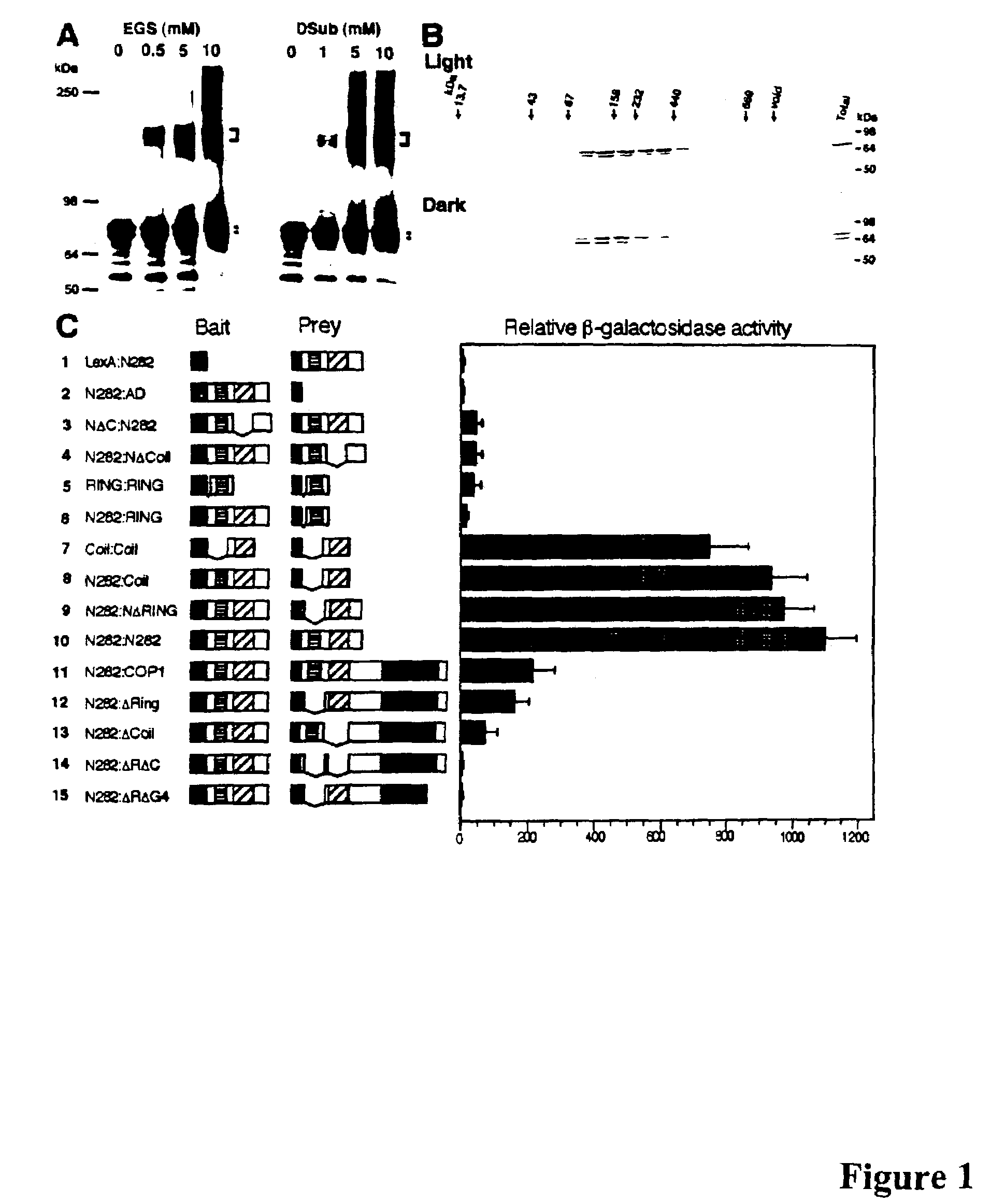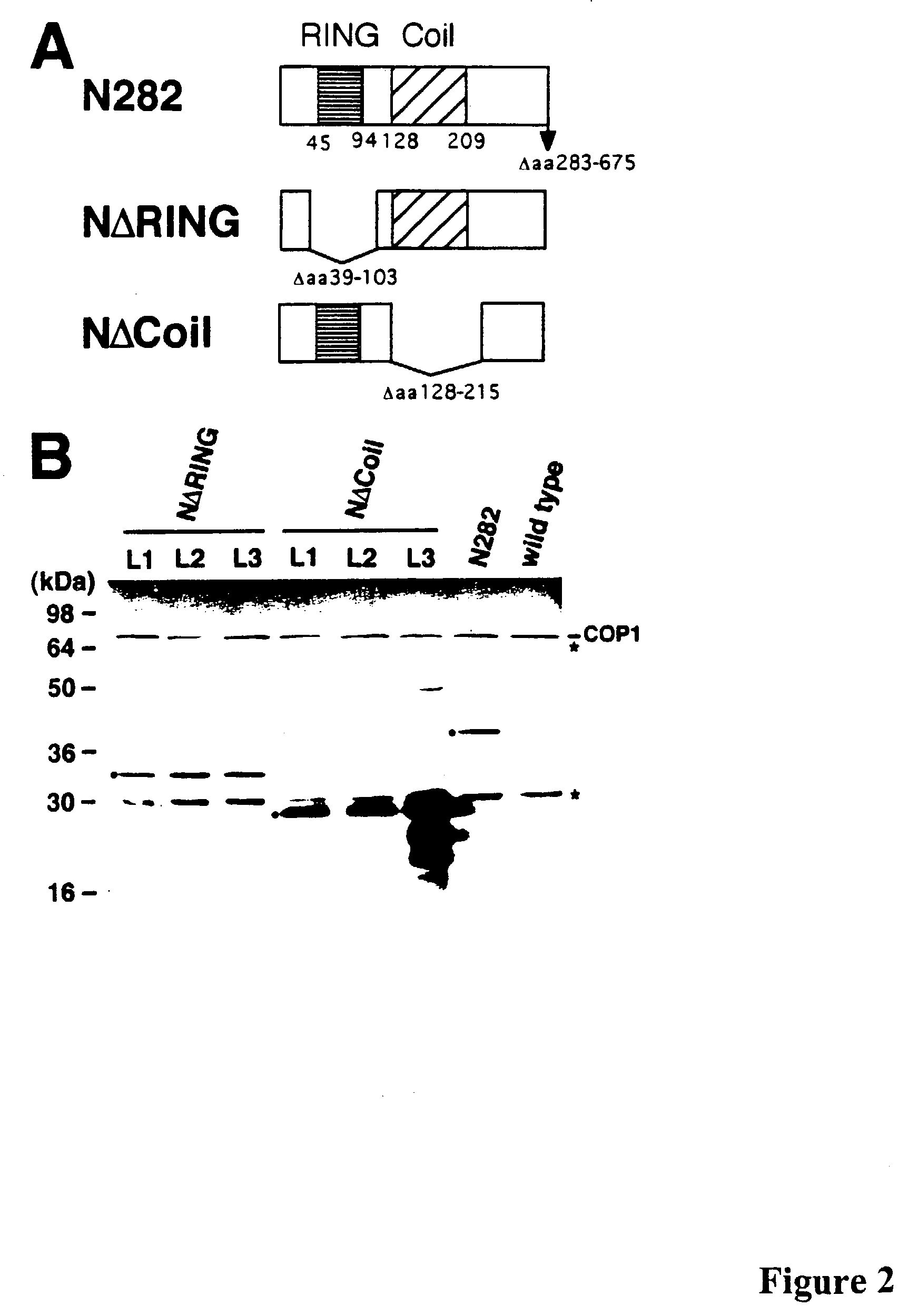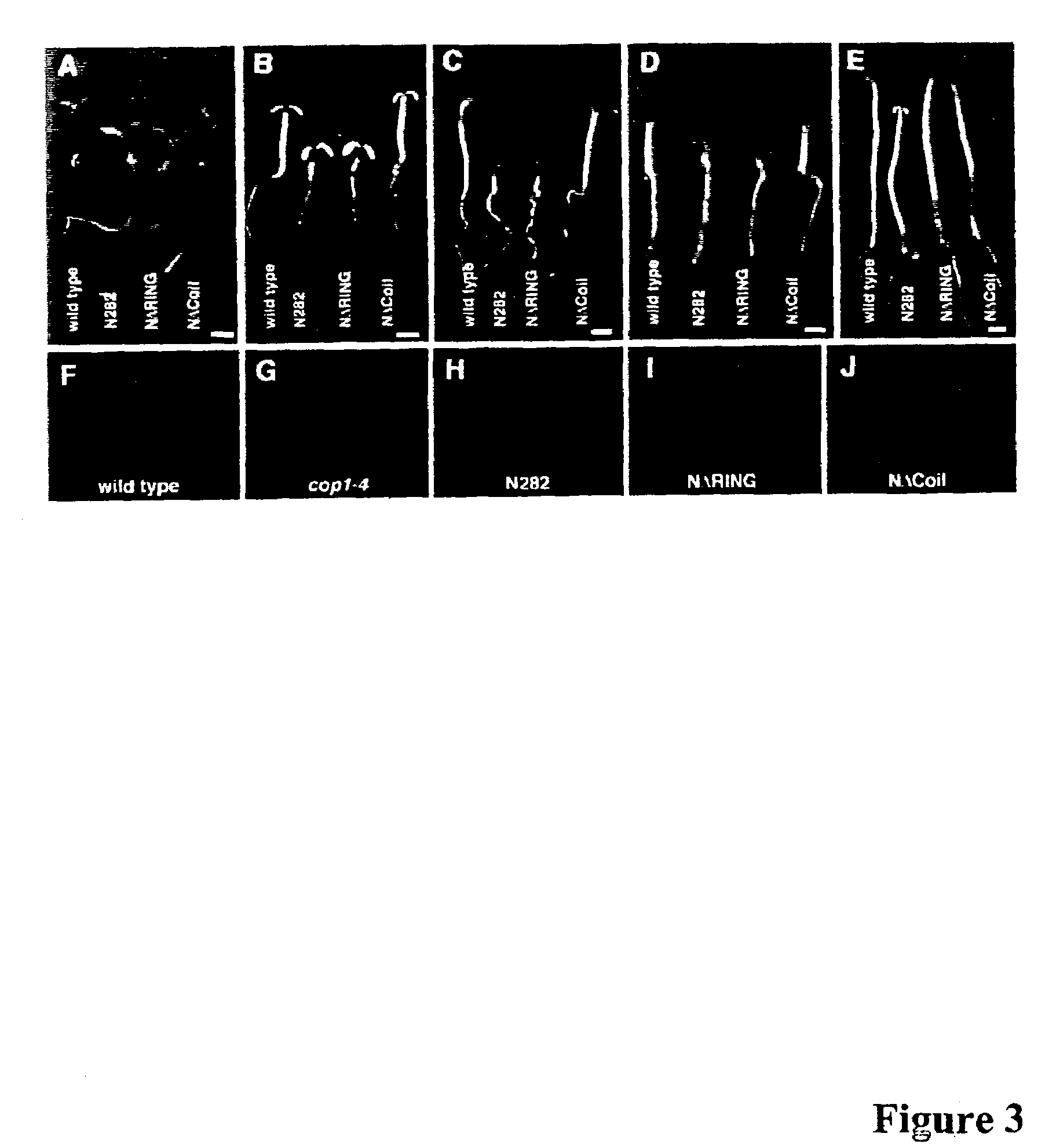Better emergence characteristics and improved seedling growth under low-light environments
a technology of low-light environment and emergence characteristics, applied in the field of seedling production, can solve the problems of easy fall over of etiolated seedlings, complex light environment in nature, plant husbandry problems,
- Summary
- Abstract
- Description
- Claims
- Application Information
AI Technical Summary
Benefits of technology
Problems solved by technology
Method used
Image
Examples
example 1
COP1 Forms a Dimer In Vitro and In Vivo
[0160]We have reported that the N282 fragment of COP1, which contains both the Ring-finger and Coil regions, possesses the ability to interact with the full-length COP1 in a yeast two-hybrid system, implying that COP1 may function as a homodimer or multimer (McNellis et al., 1996). To better understand the COP1 self-association, we performed a chemical cross-linking analysis of in-vitro translated COP1 protein in solution. A FLAG-COP1 epitope tagged protein was in-vitro translated and then cross-linked with either dimethylsuberimidate (DSub) or ethylene glycobis (succinimidylsuccinate) (EGS). FIG. 1A shows monomeric FLAG-COP1 (78 kDa) and the cross-linked products resolved by SDS-PAGE and detected by fluorography. Cross linking with either Dsub or EGS generated a band with apparent molecular size of approximately 160 kDa, clearly indicating dimer formation in vitro (FIG. 1A).
[0161]To confirm the presence of COP1 dimers in vivo, a gel-filtration...
example 2
COP1 Dimerizes through the Coil Domain
[0162]To further delimit the COP1 dimerization domain within N282 fragment of COP1, a series of deletion mutants of N282 were constructed and analyzed using the yeast two-hybrid assay (FIG. 1C). The result indicates that the Coil domain of COP1 was shown to be both necessary and sufficient for self association (FIGS. 1C3, 1C4, 1C7 to 12C10). However, the deletion of the Coil from the N282 fragment still retained some weak and reproducible interactions slightly higher than negative controls (see FIGS. 1C1 to 1C4), suggesting the presence of residual COP1 self-association within the rest of the N-terminal region. The Ring-finger domain seems responsible for this residual activity since this domain showed weak interaction with itself (FIG. 1C5). A supportive role for the Ring-finger in COP1 intramolecular association became evident among the constructs with intact C-terminus (FIGS. 1C11 to 1C14): deletion of the Coil domain still retained a weak in...
example 3
Overexpression of the Coil Region Confers Seedling Hyperphotomorphogenic Development
[0163]If the Coil domain has a major role for COP1 dimerization, it may represent the domain primarily responsible for the observed dominant negative phenotype in N282 overexpression plants (McNellis et al., 1996). To test this, transgenic Arabidopsis plants expressing two N-terminal COP1 mutant forms under the strong CaMV35S promoter were generated. As shown in FIG. 2A, NΔRING and NΔCoil are essentially the N282 fragment of COP1 lacking the Ring-finger or the Coil domain, respectively. Protein gel immunoblot analysis with anti-COP1 antibody of three representative NΔRING and NΔCoil transgenic lines suggested that all lines accumulated transgene products at comparable or higher level than that of the N282 overexpressors (FIG. 2B, McNellis et al., 1996). In all transgenic lines examined, the level of the endogenous COP1 protein appeared to be unaltered (FIG. 2B).
[0164]Transgenic Arabidopsis seedlings ...
PUM
 Login to View More
Login to View More Abstract
Description
Claims
Application Information
 Login to View More
Login to View More - R&D
- Intellectual Property
- Life Sciences
- Materials
- Tech Scout
- Unparalleled Data Quality
- Higher Quality Content
- 60% Fewer Hallucinations
Browse by: Latest US Patents, China's latest patents, Technical Efficacy Thesaurus, Application Domain, Technology Topic, Popular Technical Reports.
© 2025 PatSnap. All rights reserved.Legal|Privacy policy|Modern Slavery Act Transparency Statement|Sitemap|About US| Contact US: help@patsnap.com



